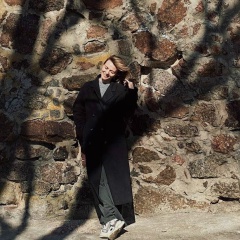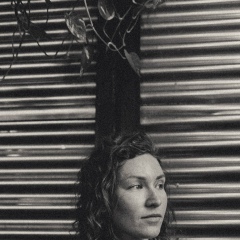Сегодня
День осеннего равноденствия и праздник урожая
22 или 23 сентября происходит осеннее равноденствие, когда день и ночь длятся по 12 часов. Осеннее равноденствие - астрономическое начало осени. После даты осеннего равноденствия солнце переходит в южное полушарие. С осеннего равноденствия сокращение светового дня кажется нам наиболее стремительным
Языческие празднования Дня осеннего равноденствия
С момента осеннего равноденствия власть солнца с каждым днем уменьшается до самого зимнего солнцестояния, после которого она опять начнет возрастать, приближая новый земледельческий сезон. А пока, после временного равновесия, наступает время власти тьмы. Земля готовится к зиме: собираются в стаи перелетные птицы и начинается осенний листопад. Осеннее равноденствие для наших предков было временем вознесения благодарностей богам за урожай и достаток, а также воздания почестей мертвым и украшения могил. В конце сентября ходили в леса за грибами и целебными растениями, делали вино из созревших яблок и винограда (на юге Европы), а также отмечали конец сбора урожая благодарственными застольями.
В философском плане - это время подведения итогов, вознесения благодарностей за то, что мы имеем, и завершения годовых дел.
Мабон - кельтский праздник осеннего равноденствия
На осеннее равноденствие древние кельты отмечали Мабон (Mabon) - фестиваль второго урожая и созревания яблок. Традиции Мабона с языческих времен живы во многих европейских странах, где в конце сентября традиционно проводятся праздники урожая. Часто Фестиваль урожая (День благодарности за урожай) проводят в воскресенье за полнолунием, ближайшим ко дню осеннего равноденствия. Это полнолуние называют Урожайной луной. Обычно праздник урожая проходит в конце сентября, но иногда он попадает на начало октября. В этот день прихожане украшают церкви корзинами с фруктами и овощами их своих садов, продукцией с ферм и свежими цветами. После службы эту еду раздают тем, кто в ней нуждается. Обязательно делают благотворительные сборы для местной общины.
В средневековье Римская церковь заменила древние сентябрьские фестивали благодарности на Михайлов день (день Архангела Михаила, 29 сентября), празднование которого унаследовало многие традиции старинных фестивалей осеннего равноденствия.
Вересень, осенины - древние славянские праздники сентября
В начале сентября восточные славяне отмечали Осенины (отдание Овсеня) - праздник начала осени и благодарения Земли за урожай. Овсень в славянской мифологии являлся божеством, отвечающим за смену времен года. К началу сентября завершалась жатва на полях, но все еще продолжались огородные работы. После Осенин начинался сбор хмеля.
Солнце в представлении древних славян (как и других язычников) проходило за год разные ипостаси, связанные с временами года. В сентябре солнце из "взрослого" (от летнего солнцестояния до осеннего равноденствия) состояния переходило в "старческое", которое продолжалось от осеннего равноденствия до зимнего солнцестояния.
В день осеннего равноденствия у славян наступал седьмой месяц года, посвященный богу Велесу, который так и назывался Вересень. Этот свой великий праздник древние славяне справляли в течение двух недель - неделю до и неделю после дня осеннего равноденствия. Медовый напиток сурью настаивали на только что собранном хмеле и угощались ей во время праздничных трапез.
После осеннего равноденствия древние жители Руси провожали богиню Живу в Сваргу (небесное царство), благодаря ее за подаренный урожай. Сварга закрывалась на холодный и темный зимний период. Открытие Сварги отмечали в последний день праздничной недели на Комоедицу (Масленицу), которая выпадала у древних жителей Руси на весеннее равноденствие - 21 марта.
Во времена Христианства большой древнеславянский праздник Велесень церковь заменила на Рождество Пресвятой Богородицы (отмечается РПЦ 21 сентября).
День осеннего равноденствия и праздник урожая
22 или 23 сентября происходит осеннее равноденствие, когда день и ночь длятся по 12 часов. Осеннее равноденствие - астрономическое начало осени. После даты осеннего равноденствия солнце переходит в южное полушарие. С осеннего равноденствия сокращение светового дня кажется нам наиболее стремительным
Языческие празднования Дня осеннего равноденствия
С момента осеннего равноденствия власть солнца с каждым днем уменьшается до самого зимнего солнцестояния, после которого она опять начнет возрастать, приближая новый земледельческий сезон. А пока, после временного равновесия, наступает время власти тьмы. Земля готовится к зиме: собираются в стаи перелетные птицы и начинается осенний листопад. Осеннее равноденствие для наших предков было временем вознесения благодарностей богам за урожай и достаток, а также воздания почестей мертвым и украшения могил. В конце сентября ходили в леса за грибами и целебными растениями, делали вино из созревших яблок и винограда (на юге Европы), а также отмечали конец сбора урожая благодарственными застольями.
В философском плане - это время подведения итогов, вознесения благодарностей за то, что мы имеем, и завершения годовых дел.
Мабон - кельтский праздник осеннего равноденствия
На осеннее равноденствие древние кельты отмечали Мабон (Mabon) - фестиваль второго урожая и созревания яблок. Традиции Мабона с языческих времен живы во многих европейских странах, где в конце сентября традиционно проводятся праздники урожая. Часто Фестиваль урожая (День благодарности за урожай) проводят в воскресенье за полнолунием, ближайшим ко дню осеннего равноденствия. Это полнолуние называют Урожайной луной. Обычно праздник урожая проходит в конце сентября, но иногда он попадает на начало октября. В этот день прихожане украшают церкви корзинами с фруктами и овощами их своих садов, продукцией с ферм и свежими цветами. После службы эту еду раздают тем, кто в ней нуждается. Обязательно делают благотворительные сборы для местной общины.
В средневековье Римская церковь заменила древние сентябрьские фестивали благодарности на Михайлов день (день Архангела Михаила, 29 сентября), празднование которого унаследовало многие традиции старинных фестивалей осеннего равноденствия.
Вересень, осенины - древние славянские праздники сентября
В начале сентября восточные славяне отмечали Осенины (отдание Овсеня) - праздник начала осени и благодарения Земли за урожай. Овсень в славянской мифологии являлся божеством, отвечающим за смену времен года. К началу сентября завершалась жатва на полях, но все еще продолжались огородные работы. После Осенин начинался сбор хмеля.
Солнце в представлении древних славян (как и других язычников) проходило за год разные ипостаси, связанные с временами года. В сентябре солнце из "взрослого" (от летнего солнцестояния до осеннего равноденствия) состояния переходило в "старческое", которое продолжалось от осеннего равноденствия до зимнего солнцестояния.
В день осеннего равноденствия у славян наступал седьмой месяц года, посвященный богу Велесу, который так и назывался Вересень. Этот свой великий праздник древние славяне справляли в течение двух недель - неделю до и неделю после дня осеннего равноденствия. Медовый напиток сурью настаивали на только что собранном хмеле и угощались ей во время праздничных трапез.
После осеннего равноденствия древние жители Руси провожали богиню Живу в Сваргу (небесное царство), благодаря ее за подаренный урожай. Сварга закрывалась на холодный и темный зимний период. Открытие Сварги отмечали в последний день праздничной недели на Комоедицу (Масленицу), которая выпадала у древних жителей Руси на весеннее равноденствие - 21 марта.
Во времена Христианства большой древнеславянский праздник Велесень церковь заменила на Рождество Пресвятой Богородицы (отмечается РПЦ 21 сентября).
Today
Autumnal equinox and harvest festival
On September 22 or 23, the autumn equinox occurs, when day and night last 12 hours. The autumnal equinox is the astronomical beginning of autumn. After the date of the autumnal equinox, the sun moves to the southern hemisphere. Since the autumnal equinox, the reduction in daylight hours seems to us the most rapid
Pagan celebrations of the Autumnal Equinox
From the moment of the autumnal equinox, the power of the sun decreases every day until the very winter solstice, after which it will begin to increase again, bringing a new agricultural season closer. In the meantime, after a temporary balance, the time of the power of darkness comes. The earth is preparing for winter: migratory birds gather in flocks and autumn leaves fall. The autumnal equinox for our ancestors was a time of giving thanks to the gods for the harvest and prosperity, as well as honoring the dead and decorating graves. At the end of September, they went to the forests for mushrooms and medicinal plants, made wine from ripe apples and grapes (in southern Europe), and also celebrated the end of the harvest with thanksgiving feasts.
Philosophically, this is the time for taking stock, giving thanks for what we have, and completing annual affairs.
Mabon - Celtic festival of the autumnal equinox
On the autumnal equinox, the ancient Celts celebrated Mabon - the festival of the second harvest and ripening of apples. The traditions of Mabon have been alive since pagan times in many European countries, where harvest festivals are traditionally held at the end of September. Often, the Harvest Festival (Harvest Thanksgiving Day) is held on Sunday after the full moon closest to the autumnal equinox. This full moon is called the Harvest Moon. Usually the harvest festival takes place at the end of September, but sometimes it falls into the beginning of October. On this day, parishioners decorate churches with baskets of fruits and vegetables from their gardens, produce from farms and fresh flowers. After the service, this food is distributed to those who need it. Be sure to do charity donations for the local community.
In the Middle Ages, the Roman Church replaced the ancient September gratitude festivals on Michael's Day (Archangel Michael's Day, September 29), the celebration of which inherited many of the traditions of the ancient festivals of the autumn equinox.
Veresen, autumn - ancient Slavic holidays of September
In early September, the Eastern Slavs celebrated Oseniny (giving of Ovsen) - a holiday of the beginning of autumn and thanksgiving to the Earth for the harvest. Oat in Slavic mythology was a deity responsible for changing the seasons. By the beginning of September, the harvest in the fields was completed, but the garden work was still going on. After Osenin, hop harvesting began.
The sun in the minds of the ancient Slavs (as well as other pagans) passed during the year different hypostases associated with the seasons. In September, the sun from the "adult" (from the summer solstice to the autumnal equinox) state passed into the "senile" state, which lasted from the autumnal equinox to the winter solstice.
On the day of the autumnal equinox, the Slavs began the seventh month of the year, dedicated to the god Veles, who was called Veresen. The ancient Slavs celebrated this great holiday for two weeks - a week before and a week after the day of the autumnal equinox. Surya honey drink was insisted on freshly harvested hops and treated to it during festive meals.
After the autumnal equinox, the ancient inhabitants of Russia saw off the goddess I Live in Svarga (heavenly kingdom), thanks to her for the presented harvest. Svarga was closed for the cold and dark winter. The opening of Svarga was celebrated on the last day of the festive week on Komoeditsa (Maslenitsa), which fell among the ancient inhabitants of Russia at the spring equinox - March 21.
During the time of Christianity, the great Old Slavic holiday Velesen was replaced by the church for the Nativity of the Most Holy Theotokos (celebrated by the Russian Orthodox Church on September 21).
Autumnal equinox and harvest festival
On September 22 or 23, the autumn equinox occurs, when day and night last 12 hours. The autumnal equinox is the astronomical beginning of autumn. After the date of the autumnal equinox, the sun moves to the southern hemisphere. Since the autumnal equinox, the reduction in daylight hours seems to us the most rapid
Pagan celebrations of the Autumnal Equinox
From the moment of the autumnal equinox, the power of the sun decreases every day until the very winter solstice, after which it will begin to increase again, bringing a new agricultural season closer. In the meantime, after a temporary balance, the time of the power of darkness comes. The earth is preparing for winter: migratory birds gather in flocks and autumn leaves fall. The autumnal equinox for our ancestors was a time of giving thanks to the gods for the harvest and prosperity, as well as honoring the dead and decorating graves. At the end of September, they went to the forests for mushrooms and medicinal plants, made wine from ripe apples and grapes (in southern Europe), and also celebrated the end of the harvest with thanksgiving feasts.
Philosophically, this is the time for taking stock, giving thanks for what we have, and completing annual affairs.
Mabon - Celtic festival of the autumnal equinox
On the autumnal equinox, the ancient Celts celebrated Mabon - the festival of the second harvest and ripening of apples. The traditions of Mabon have been alive since pagan times in many European countries, where harvest festivals are traditionally held at the end of September. Often, the Harvest Festival (Harvest Thanksgiving Day) is held on Sunday after the full moon closest to the autumnal equinox. This full moon is called the Harvest Moon. Usually the harvest festival takes place at the end of September, but sometimes it falls into the beginning of October. On this day, parishioners decorate churches with baskets of fruits and vegetables from their gardens, produce from farms and fresh flowers. After the service, this food is distributed to those who need it. Be sure to do charity donations for the local community.
In the Middle Ages, the Roman Church replaced the ancient September gratitude festivals on Michael's Day (Archangel Michael's Day, September 29), the celebration of which inherited many of the traditions of the ancient festivals of the autumn equinox.
Veresen, autumn - ancient Slavic holidays of September
In early September, the Eastern Slavs celebrated Oseniny (giving of Ovsen) - a holiday of the beginning of autumn and thanksgiving to the Earth for the harvest. Oat in Slavic mythology was a deity responsible for changing the seasons. By the beginning of September, the harvest in the fields was completed, but the garden work was still going on. After Osenin, hop harvesting began.
The sun in the minds of the ancient Slavs (as well as other pagans) passed during the year different hypostases associated with the seasons. In September, the sun from the "adult" (from the summer solstice to the autumnal equinox) state passed into the "senile" state, which lasted from the autumnal equinox to the winter solstice.
On the day of the autumnal equinox, the Slavs began the seventh month of the year, dedicated to the god Veles, who was called Veresen. The ancient Slavs celebrated this great holiday for two weeks - a week before and a week after the day of the autumnal equinox. Surya honey drink was insisted on freshly harvested hops and treated to it during festive meals.
After the autumnal equinox, the ancient inhabitants of Russia saw off the goddess I Live in Svarga (heavenly kingdom), thanks to her for the presented harvest. Svarga was closed for the cold and dark winter. The opening of Svarga was celebrated on the last day of the festive week on Komoeditsa (Maslenitsa), which fell among the ancient inhabitants of Russia at the spring equinox - March 21.
During the time of Christianity, the great Old Slavic holiday Velesen was replaced by the church for the Nativity of the Most Holy Theotokos (celebrated by the Russian Orthodox Church on September 21).

У записи 1 лайков,
0 репостов.
0 репостов.
Эту запись оставил(а) на своей стене Олег Черкасов






















